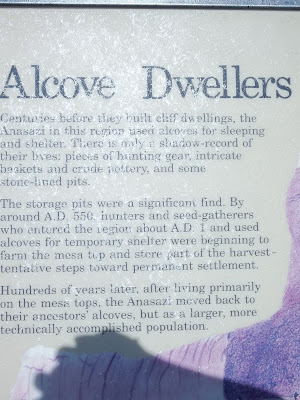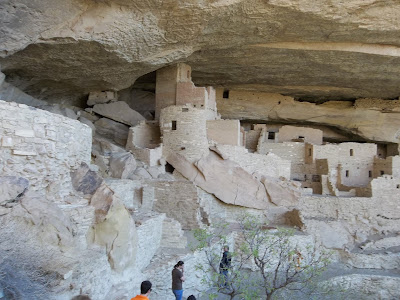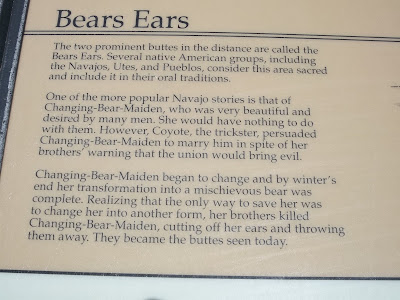 |
| Double click to read this photos caption. |
 |
| This is a photo from across the canyon. |
 |
| You have to pay to take this 1 hour tour led by a ranger. The path leading to the dwelling has a gate to keep people from wandering around on their own. |
 |
| There is only one ladder on the way to the dwelling. |
 |
| We looked up one of the towers. The floors, except for the juniper beams, are gone and you can see art work on some of the walls. I saw this design and the one in the next photo. |
 |
| What looks like windows are actually the entry ways. Ladders on the outside lead up to the different levels. The walls are plastered. The outside walls were also plastered. |
 |
| Every 1/2 hour a group of 50 is led to the dwelling. |
 |
| We traversed lots of steps through narrow crevices on the way back to the top of the mesa. |
 |
| Nolan coming up the ladders we had to climb to get back on top. The Ancestral Puebloans climbed the cliffs using small hand and toe holds they chiselled. |
 |
| The following few photos are other cliff dwellings we saw. This one's hard to see. |
 |
| Double click to enlarge this info panel to read about Square Tower House, the tallest dwelling in the park. |
 |
| Square Tower House. |
 |
| Double click to enlarge to read about the next dwelling photos. |
 |
| Spruce Tree House |
 |
| The path to Spruce Tree House is all paved but steep in places. |
 |
| Spruce Tree House again. |
 |
| Some parts of the park had been engulfed in flames during the last decade. |
 |
| The landscape in these parts were very barren. |
 |
| Others were covered in juniper and pinyon pine |
 |
| Double click to read |
 |
| Pithouses were the dwellings most used around 550 A.D. when the mesa tops were starting to be inhabited. |
 |
| Double click to read the info describing the next photo. |
 |
| The highlight of Nolan's day was seeing coyotes. We saw two white ones when we were eating lunch but didn't get photos. |

































